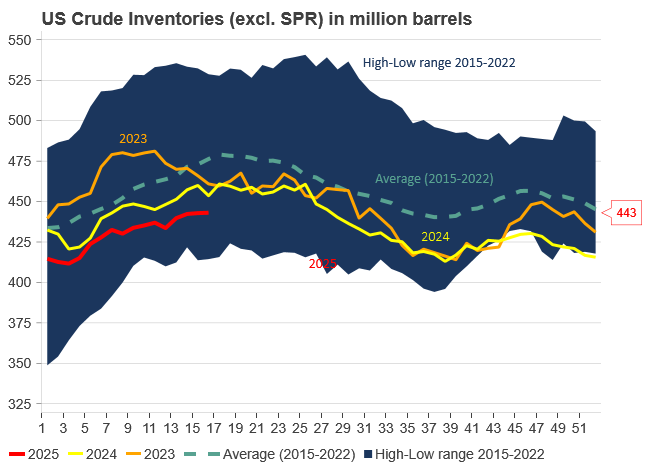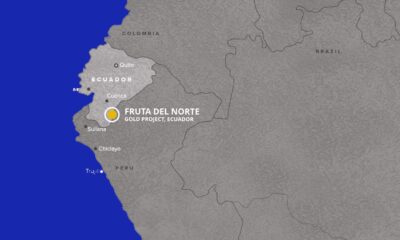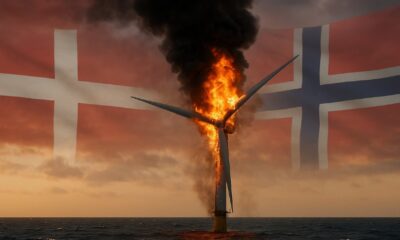Analys
OPEC+ tensions resurface: Brent slides to $66.6

Brent crude prices have lost the positive momentum seen from Monday evening through midday yesterday. The price initially bottomed out at USD 65.7 per barrel on Monday afternoon, before climbing steadily by USD 3 to USD 68.7 on Wednesday morning. However, that upward momentum quickly reversed course. Brent tumbled nearly USD 3.4, hitting a weekly low of USD 65.3 per barrel before recovering some losses. As of this morning, it trades at USD 66.6 – a reflection of continued and substantial volatility.

Market fundamentals have largely remained in the background, with tariff rhetoric still dominating headlines. However, yesterday’s drop was clearly driven by the supply side of the equation, after reports emerged that several OPEC+ members are pushing for an accelerated oil output increase in June.
The timing of this move – amid global trade uncertainty and softening demand – may seem counterintuitive. But internal rifts within OPEC+ appear to be taking precedence. In May, Saudi Arabia already surprised the market with an output hike aimed at disciplining quota violators. That move failed to restrict Kazakhstan, the group’s largest overproducer, and has now triggered discussions of yet another sizeable production boost in June.
A later statement from Kazakhstan’s energy ministry, pledging renewed compliance, may have helped lift crude prices slightly this morning.
The next OPEC+ meeting is set for May 5, with the proposed June output hike expected to top the agenda. The group will likely choose between a scheduled, incremental increase of 138,000 barrels per day, or a more aggressive jump of 411,000 barrels per day – equivalent to ish three months’ worth of increases rolled into one. The latter scenario would put downward pressure on oil prices and highlight deepening tensions within OPEC+, while also exacerbating concerns in a market already clouded by weak demand expectations.
Although the final decision on volumes remains unclear, OPEC+ has demonstrated it still has pricing power, and that it can pull prices lower quickly if it chooses to do so.
________
US DOE DATA
U.S. refinery activity picked up in the week ending April 18, with crude inputs rising by 326,000 barrels per day to a total of 15.9 million. Utilization rates also climbed to 88.1%. Gasoline output strengthened to 10.1 million barrels per day, while distillate fuel production edged lower to 4.6 million.
Crude imports declined by 412,000 barrels per day to 5.6 million last week. Over the past month, import volumes have averaged 6.1 million barrels per day – down 6.8% compared to the same period a year ago. Gasoline and distillate imports came in at 858,000 and 97,000 barrels per day, respectively.
Inventories were mixed. Crude oil inventories (excl. SPR) rose slightly by 0.2 million barrels to 443.1 million, still 5% below the five-year average. Gasoline inventories posted a sharp draw of 4.5 million barrels and are now 3% under seasonal norms. Diesel inventories dropped by 2.4 million barrels, leaving levels 13% below the five-year average. Propane inventories rose by 2.3 million but remained 7% under typical levels. Total commercial petroleum inventories saw a net decline of 0.7 million barrels on the week.
Product demand was generally stable. Total products supplied averaged 19.9 million barrels per day over the last four weeks, up 0.4% year-on-year. Gasoline demand slipped by 0.4%, while distillates and jet fuel rose sharply, by 12.8% and 13.8%, respectively.


Analys
Brent sideways on sanctions and peace talks

Brent crude is currently trading around USD 66.2 per barrel, following a relatively tight session on Monday, where prices ranged between USD 65.3 and USD 66.8. While expectations of higher OPEC+ supply continue to weigh on sentiment, recent headlines have been dominated by geopolitics – particularly developments in Washington.

At the center is the White House meeting between Trump, Zelenskyy, and several key European leaders. During the meeting, Trump reportedly placed a direct call to Putin to discuss a potential bilateral sit-down between Putin and Zelenskyy, which several European officials have said could take place within two weeks.
While the Kremlin’s response remains vague, markets have interpreted this as a modestly positive signal, with both equities and global oil prices holding steady. Brent is marginally lower since yesterday’s close, while U.S. and Asian equity markets remain broadly flat.
Still, the political undertone is shifting, and markets may be underestimating the longer-term implications. According to the NY times, Putin has proposed a peace plan under which Russia would claim full control of the Donbas in exchange for dropping demands over Kherson and Zaporizhzhia – territories it has not yet seized.
Meanwhile, discussions around Ukraine’s long-term security framework are starting to take shape. Zelenskyy appeared encouraged by Trump’s openness to supporting a post-war security guarantee for Ukraine. While the exact terms remain unclear, U.S. special envoy Steve Witkoff stated that Putin had signaled willingness to allow Washington and its allies to offer Kyiv a NATO-style collective defense guarantee – a move that would significantly reshape the regional security landscape.
As diplomatic efforts gain momentum, markets are also beginning to assess the potential consequences of a partial or full rollback of U.S. sanctions on Russian energy. Any unwind would likely be gradual and uneven, especially if European allies resist or delay alignment. The U.S. could act unilaterally by loosening financial restrictions, granting Russian firms greater access to Western capital and services, and effectively neutralizing the price cap mechanism. However, the EU embargo on Russian crude and products remains a more immediate constraint on flows – particularly as it continues to tighten.
Even if the U.S. were to ease restrictions, Moscow would remain heavily reliant on buyers like India and China to absorb the majority of its crude exports, as European countries are unlikely to quickly re-engage in energy trade. That shift is already playing out. As India pulls back amid newly doubled U.S. tariffs – a response to its ongoing Russian oil purchases – Chinese refiners have stepped in.
So far in August, Chinese imports of Russia’s Urals crude – typically shipped from Baltic and Black Sea ports – have nearly doubled from the YTD average, with at least two tankers idling off Zhoushan and more reportedly en route (Kpler data). The uptick is driven by attractive pricing and the absence of direct U.S. trade penalties on China, which remains in a delicate tariff truce with Washington.
Indian refiners, by contrast, are notably more cautious – receiving offers but accepting few. The takeaway is clear: China is acting as the buyer of last resort for surplus Russian barrels, likely directing them into strategic storage. While this may temporarily cushion the effects of sanctions relief, it cannot fully offset the constraints imposed by Europe’s ongoing absence.
As a result, any meaningful boost to global supply from a rollback of U.S. sanctions on Russia may take longer to materialize than headlines suggest.
Analys
Crude inventories builds, diesel remain low

U.S. commercial crude inventories posted a 3-million-barrel build last week, according to the DOE, bringing total stocks to 426.7 million barrels – now 6% below the five-year seasonal average. The official figure came in above Tuesday’s API estimate of a 1.5-million-barrel increase.

Gasoline inventories fell by 0.8 million barrels, bringing levels roughly in line with the five-year norm. The composition was mixed, with finished gasoline stocks rising, while blending components declined.
Diesel inventories rose by 0.7 million barrels, broadly in line with the API’s earlier reading of a 0.3-million-barrel increase. Despite the weekly build, distillate stocks remain 15% below the five-year average, highlighting continued tightness in diesel supply.
Total commercial petroleum inventories (crude and products combined, excluding SPR) rose by 7.5 million barrels on the week, bringing total stocks to 1,267 million barrels. While inventories are improving, they remain below historical norms – especially in distillates, where the market remains structurally tight.
Analys
OPEC+ will have to make cuts before year end to stay credible

Falling 8 out of the last 10 days with some rebound this morning. Brent crude fell 0.7% yesterday to USD 65.63/b and traded in an intraday range of USD 65.01 – 66.33/b. Brent has now declined eight out of the last ten days. It is now trading on par with USD 65/b where it on average traded from early April (after ’Liberation day’) to early June (before Israel-Iran hostilities). This morning it is rebounding a little to USD 66/b.

Russia lifting production a bit slower, but still faster than it should. News that Russia will not hike production by more than 85 kb/d per month from July to November in order to pay back its ’production debt’ due to previous production breaches is helping to stem the decline in Brent crude a little. While this kind of restraint from Russia (and also Iraq) has been widely expected, it carries more weight when Russia states it explicitly. It still amounts to a total Russian increase of 425 kb/d which would bring Russian production from 9.1 mb/d in June to 9.5 mb/d in November. To pay back its production debt it shouldn’t increase its production at all before January next year. So some kind of in-between path which probably won’t please Saudi Arabia fully. It could stir some discontent in Saudi Arabia leading it to stay the course on elevated production through the autumn with acceptance for lower prices with ’Russia getting what it is asking for’ for not properly paying down its production debt.
OPEC(+) will have to make cuts before year end to stay credible if IEA’s massive surplus unfolds. In its latest oil market report the IEA estimated a need for oil from OPEC of 27 mb/d in Q3-25, falling to 25.7 mb/d in Q4-25 and averaging 25.7 mb/d in 2026. OPEC produced 28.3 mb/d in July. With its ongoing quota unwind it will likely hit 29 mb/d later this autumn. Staying on that level would imply a running surplus of 3 mb/d or more. A massive surplus which would crush the oil price totally. Saudi Arabia has repeatedly stated that OPEC+ it may cut production again. That this is not a one way street of higher production. If IEA’s projected surplus starts to unfold, then OPEC+ in general and Saudi Arabia specifically must make cuts in order to stay credible versus what it has now repeatedly stated. Credibility is the core currency of Saudi Arabia and OPEC(+). Without credibility it can no longer properly control the oil market as it whishes.
Reactive or proactive cuts? An important question is whether OPEC(+) will be reactive or proactive with respect to likely coming production cuts. If reactive, then the oil price will crash first and then the cuts will be announced.
H2 has a historical tendency for oil price weakness. Worth remembering is that the oil price has a historical tendency of weakening in the second half of the year with OPEC(+) announcing fresh cuts towards the end of the year in order to prevent too much surplus in the first quarter.
-

 Nyheter3 veckor sedan
Nyheter3 veckor sedanKopparpriset i fritt fall i USA efter att tullregler presenterats
-

 Nyheter3 veckor sedan
Nyheter3 veckor sedanLundin Gold rapporterar enastående borrresultat vid Fruta del Norte
-

 Nyheter3 veckor sedan
Nyheter3 veckor sedanStargate Norway, AI-datacenter på upp till 520 MW etableras i Narvik
-

 Nyheter3 veckor sedan
Nyheter3 veckor sedanMängden M1-pengar ökar kraftigt
-

 Nyheter2 veckor sedan
Nyheter2 veckor sedanLundin Gold hittar ny koppar-guld-fyndighet vid Fruta del Norte-gruvan
-

 Nyheter2 veckor sedan
Nyheter2 veckor sedanGuld stiger till över 3500 USD på osäkerhet i världen
-

 Nyheter2 veckor sedan
Nyheter2 veckor sedanAlkane Resources och Mandalay Resources har gått samman, aktör inom guld och antimon
-

 Nyheter1 vecka sedan
Nyheter1 vecka sedanOmgående mångmiljardfiasko för Equinors satsning på Ørsted och vindkraft





